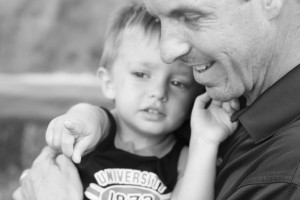 Suggestions for Children on Monitored Visits
Suggestions for Children on Monitored Visits
Prior to their first visit, children should be told about the Guidelines for Visiting Party. It is important that children know there are rules which the visiting party must follow and that it is the job of the monitor to assure that this happens for everyones safety. How much the rules are described will depend on the developmental level of the children.
If the child is apprehensive about monitored visits, a plan can be made with the child to help decrease the anxiety. (The plan can be made by the social worker and/or the therapist in conjunction with the monitor.) The child can be an active participant in order to make the visit as comfortable as possible. The plan can include any or all of the following:
- Visitation Location
- Where everyone will sit during the visit. For instance, the child may want to be near the door or have the visitor across the room.
- What type of physical contact the child wants or does not want during the visit.
- If there are certain people the child would like or not like at the visit. (This needs to be preapproved by the social worker, therapist and/or court depending on the courtâs order.)
- Hand signals which the child can use to indicate a need for help from the monitor.
- If there are things the child does not want the alleged perpetrator to bring up during the visit.
- Whether there are certain things the child wants to talk about with the alleged offender. If the child can’t decide what he or she wants to say before the visit, the child can tell the monitor during the visit.
- Whether the child wants a therapist or DCFS worker to assist him or her to talk about the allegations with the alleged perpetrator prior to or during the monitored visit. (If the alleged perpetrator denies the child’s allegations, he or she can be told the child wants to talk about allegations. The alleged perpetrator is not to deny the allegations nor does the alleged perpetrator need to acknowledge them.)
If the child has alleged abuse or neglect and will have visits with the alleged perpetrator, it is very helpful for the child to be able to talk openly during the visit about the allegations or for the person monitoring the visit to openly state that the reason for the monitored visits is because of the allegations. Often there is no discussion with the child about why there are to be visits after the child’s allegations of abuse or after a period of separation from the alleged perpetrator. Likewise there is no mention of the allegations between the child and the alleged perpetrator. Never mentioning the allegations can lead to the child feeling unsupported or not believed, assuming that nothing really happens to someone who does bad things, and/or a belief that after a child is hurt, it is not to be discussed openly again. This can lead to behavior such as is sometimes seen in battered women who go back into abusive situations without any resolution of the abuse.
After the visits the child can tell the monitor how the visit went and if any changes need be made for future visits.

